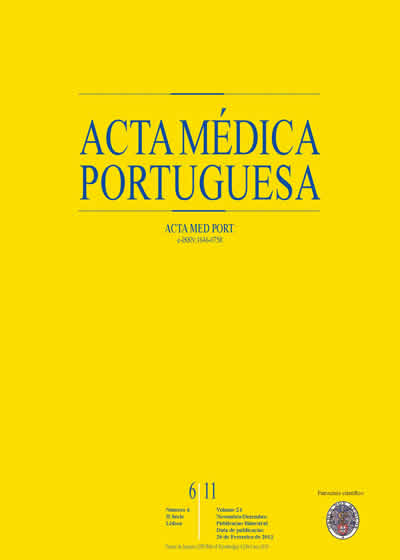Spondylodiscitis: which etiology?.
DOI:
https://doi.org/10.20344/amp.1408Abstract
Spondylodiskitis is a rare condition in adults but with high index of morbidity and mortality due to difficult diagnosis. The insidious evolution and the unspecificity of symptoms interfere with prompt treatment, being the diagnosis based primarily on a high index of suspicion. There are two major groups of spondylodiskitis: pyogenic, being Staphylococcus aureus the most frequent etiological pathogen, and granulomatous, caused mainly by Mycobacterium tuberculosis and Brucella melitensis, both endemic in Portugal. The authors describe two clinical cases of spondylodiskitis, where the etiological investigation proved a challenge. In both cases the combination of clinical and imagiological data contributed to the appropriate empirical treatment, with a favorable clinical outcome.Downloads
Downloads
Published
How to Cite
Issue
Section
License
All the articles published in the AMP are open access and comply with the requirements of funding agencies or academic institutions. The AMP is governed by the terms of the Creative Commons ‘Attribution – Non-Commercial Use - (CC-BY-NC)’ license, regarding the use by third parties.
It is the author’s responsibility to obtain approval for the reproduction of figures, tables, etc. from other publications.
Upon acceptance of an article for publication, the authors will be asked to complete the ICMJE “Copyright Liability and Copyright Sharing Statement “(http://www.actamedicaportuguesa.com/info/AMP-NormasPublicacao.pdf) and the “Declaration of Potential Conflicts of Interest” (http:// www.icmje.org/conflicts-of-interest). An e-mail will be sent to the corresponding author to acknowledge receipt of the manuscript.
After publication, the authors are authorised to make their articles available in repositories of their institutions of origin, as long as they always mention where they were published and according to the Creative Commons license.









